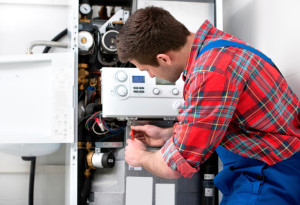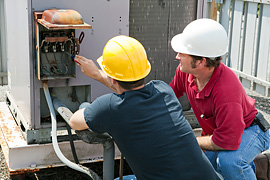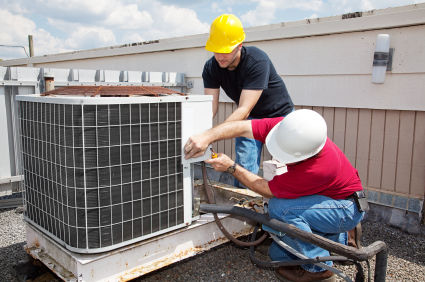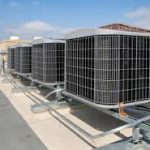Tired of sweating through every summer? Learn how you can save money with a more energy efficient A/C unit.
Air conditioner basics
The first step in getting a new air conditioner installed is determining what size you need. You don’t want one without sufficient power to cool your home, and getting an air conditioner that’s too big can be more expensive and less comfortable.
A/C units are measured in tons, which refers to the amount of heat they can remove from a home in one hour. A one-ton unit, for example, can remove 12,000 British thermal units (BTUs), while a three-ton system will remove 36,000. The larger your house, the more cooling power you’ll need: A 1,600-square-foot house, for example, might be well served by a two-and-a-half-ton unit.
However, many other variables factor into which size will work best in your home. For example, a basement is naturally cooler than first- or second-floor rooms. “You cannot calculate the size and tonnage by square foot alone,” says Dave Hutchins, owner of Bay Area Air Conditioning in New Port Richey, Florida.
Hiring an A/C contractor
Next you will need to hire an HVAC contractor. While it’s possible to purchase an air conditioner from a wholesaler and install it yourself, the level of skill required is substantial. Also, you must be certified by the Environmental Protection Agency to handle refrigerant.
For homes that have never had central air, an installation requires new breakers in your electrical panel, wires run through your foundation, new duct work linking to your existing HVAC system and the mounting of your unit on metal brackets or a concrete pad.
You’ll want to ensure a crucial task like this is done correctly, so avoid wasting time (and potential injuries) and ask a reputable A/C pro for a free quote on your system. For a basic, two-ton model, expect to pay $3,000, a mid range unit will run approximately $5,000, and top-of-the-line A/C systems can creep up over $10,000.
Angie’s List members who had new air conditioners installed in 2014 reported paying an average of $5,230, with a general range of $4,425 to $6,025, not counting discounts many service providers offer to Angie’s List members.
Tax credits and R-22 for new A/C units
To offset the cost of air conditioning, it’s possible to find rebates or tax breaks from federal or state agencies. Unfortunately, federal tax credits expired at the end of 2013 for residential systems that are Energy Star-rated and aren’t part of a new home build. You can check the Energy Star website for current tax credit information.
State governments may offer rebates if you install a particularly high-efficiency system, but they are often limited in duration, so it’s worth checking around before you hire a professional air conditioning company.
In addition, air conditioning manufacturers are phasing out the hyrdochlorofluorocarbon (HCFC) known as R-22, which is an ozone-destroying greenhouse gas. As of 2015, R-22 production has been reduced by 90 percent. Under current regulations, manufacturers may no longer produce and companies may no longer install new A/C units that contain R-22. Companies can still manufacture new parts, such as condensers with R-22, for replacement in existing units.






